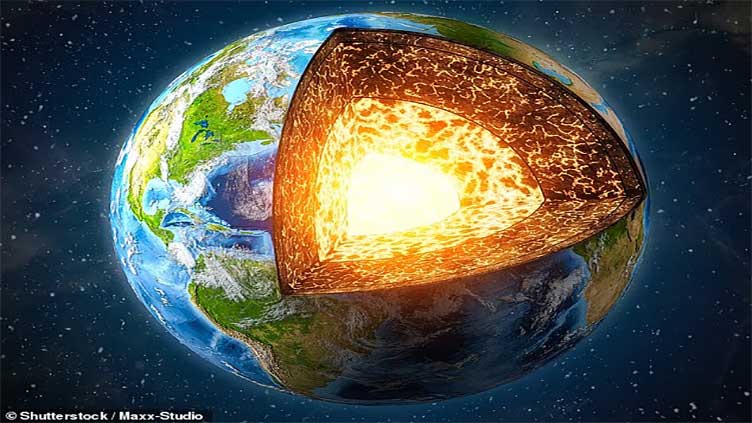Scientists make shocking discovery 1,700 miles beneath Earth's surface

Technology
A team from ETH Zurich has discovered solid rock flowing deep within Earth
(Web Desk) - Scientists have made a shocking discovery, 1,700 miles (2,700km) beneath the surface of our planet.
A team from ETH Zurich has discovered solid rock flowing deep within Earth.
The strange rocky current is neither liquid like molten magma nor solid like the brittle rock we might see at the surface.
This is the first confirmation of scientists' suspicions that rock in the depths of the planet moves on convection currents like water in a boiling pot.
'Our discovery shows that the Earth is not only active on the surface, but is also in motion deep inside,' said lead author Professor Motohiko Murakami.
Confirming this theory now allows scientists to begin mapping the hidden currents of solid rock deep within the planet.
That might one day explain the invisible motor which drives volcanoes, earthquakes, tectonic plates, and even the Earth's magnetic field.
Professor Murakami added: 'We have finally found the last piece of the puzzle.'
Scientists divide the Earth into three main layers: the crust, the mantle, and the core.
The striking discovery came from an investigation into a strange area of the mantle known as the D' layer.
When the seismic waves from earthquakes hit this layer, they suddenly speed up as if they have entered a different type of material.
Previously, Professor Murakami discovered that perovskite, the material which makes up most of the lower mantle, transforms into a new mineral around the D' layer.
Under extreme pressure and heat, perovskite becomes post-perovskite, which Professor Murakami thought might account for the sudden change in seismic waves' behaviour.
But it soon became apparent that this alone was not enough to explain why earthquake waves accelerated so much 1,700 miles beneath the surface.
The researcher's breakthrough was discovering that the hardness of post-perovskite depends on how its crystals are aligned.
Professor Murakami told MailOnline: 'Post-perovskite has an unusual property: it is extremely hard in only one specific crystallographic direction.'
Since seismic waves travel faster through harder materials, this would explain why earthquake waves suddenly become so fast only in one specific region.
In an extremely unusual experiment, Professor Murakami decided to recreate the conditions found nearly 2,000 miles beneath the Earth's surface to see how this could happen.
Professor Murakami told MailOnline: 'By sandwiching a very small sample between the tips of two single-crystal diamonds with sharply pointed ends, it is possible to generate extremely high pressures.
'And through the transparent diamond windows, we can directly observe the sample under high pressure.'
Tiny grains of perovskite were crushed at pressures up to 115 gigapascals, over 16 million pounds per square inch, to recreate the conditions of the D' layer.
Under extreme heat and pressure, crystals in the post-perovskite would line up to face in the same direction.
Testing revealed that only this specific alignment was hard enough to produce the same seismic acceleration the scientists had been looking for.
That meant there must be something happening around the D' layer which forces all of the mineral crystals to point in the same direction.



